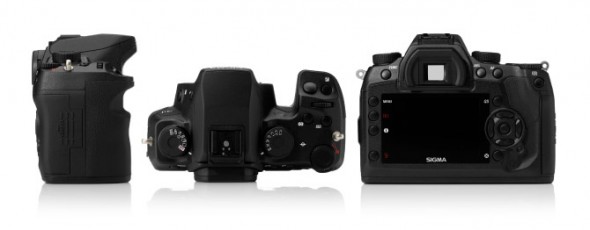This is a comment from Dan (@ZDP189) on my last Sigma SD1 post that I think it is worth sharing in a separate thread (you can check also Dan's Fuji X100 review):
Ah, you’ve run into the old Foveon X3 pixel count vs resolution chestnut. Some say Foveon called their technology ‘X3′ because they overstate their resolution by three times.
Foveon’s argument is that Bayer sensors count one sensor element (each of which are monochrome, but tuned to red, green, or blue) as one pixel, so Foveon counts each sensor element as one pixel, even though red, blue and green are stacked on top of each other. In terms of file size alone, this is true.
However, it’s not a count of resolution as we know it. To most people, resolution represents how finely the image grid is laid out. By this measure, Foveon overstates their resolution by three times. The additional colour information is nice because it avoids certain colour artefacts, but it doesn’t represent extra resolution.
The reason it’s less than perfectly clear cut is that Foveon is less susceptible to moiré and the sensor has no anti-aliasing filter. AA filters reduce moiré by slightly averaging out detail, so the sensor is a little sharper without it. Some people claim to be able to see 2/3 of the resolution that Foveon claim. On the other hand, it is a matter of scientific fact that the difference of adding/removing the AA filter does not reduce/increase the resolution by a factor of two, let alone three times, so I think this claim of superior sensor resolution is bunkum. Indeed, many Bayer sensors have no AA filter these days; none of the Super Compacts have one. The X1 does not, the X100 does not. The M8 and M9 do not either. I have never read a complaint about these cameras having moiré issues. These cameras have great resolving power, but I wouldn’t claim that my X100 had 18MP, let alone 36MP.
Furthermore, at this level of pricing, the SD1 system goes against not only the best cameras but the best lenses available. Sigma lenses are notorious for quality issues, back-focussing, corner drop off and lack of corner sharpness compared to top pro lenses. They are not compatible with the other systems; Canon won’t work without serious surgery and while you can adapt a Nikon lens on, you can only do so if you are prepared to give up all electrical functions. If the lens simply isn’t as sharp, it won’t resolve the detail onto the small 23.5×15.7mm sensor at such a high resolution (15.4MP). Simply, the SD1 has 1.7 times the pixel density per area (based on 15.4MP) as the 5D Mark II and 2.9x the pixel density of a D700 or D3S. This will have an impact on optical resolving power, not to mention signal to noise ratio.
Speaking of noise, the Foveon sensors are known to be noisier than Bayer sensors on most entry level cameras. Increase the pixel count without increasing the sensor size and you have the recipe for disaster. Whether done in camera or on a PC, noise reduction squashes detail, potentially a lot more than the AA filter would. You might also argue that as the Foveon has not already had some detail taken out by an AA filter, the detail lost in noise cancelling will be all the more apparent.
In summary, while I would agree that if you count the number of individual sensor elements in the SD-1, you will probably come up with a number of 46MP. However, I expect the actual detail resolving power to be at best commensurate with a camera of 15.3MP, which is nothing special at all.
Look at it this way, if Foveon had simply taken a 15-20MP Sony APS-C sensor and built the camera around that, then would you buy it for even the price of a consumer-grade camera? I probably wouldn’t. The build quality on past bodies has been poor, the control systems clunky, AF poor, processor slow, metering unremarkable and system compatibility is an issue. It’d be trash. You need a super trump card to pull it out of the garbage can.
The only trump card remaining is the colour rendition – not the lovely Kodachrome-esque colours of the JPEGs that really sell the DP line, but the technical limit of what actual RAW files could be processed to. I think a lot of Foveon’s colour reputation is based on what their JPEGs look like or the skill of the user in post processing. I think that most people are not capable of technically identifying the colour difference of the Foveon vs a Bayer, because Bayer interpolation works rather well. I think the only people that can technically justify the SD-1 are people trying to show patterns of colour in very fine detail – possibly scientific and industrial applications. In most cases, including fashion photography and macro photography, the increased sensor resolving power and sensitivity of the high-end Bayer sensors more than outweighs the three layer colour technology of the Foveon X3.









